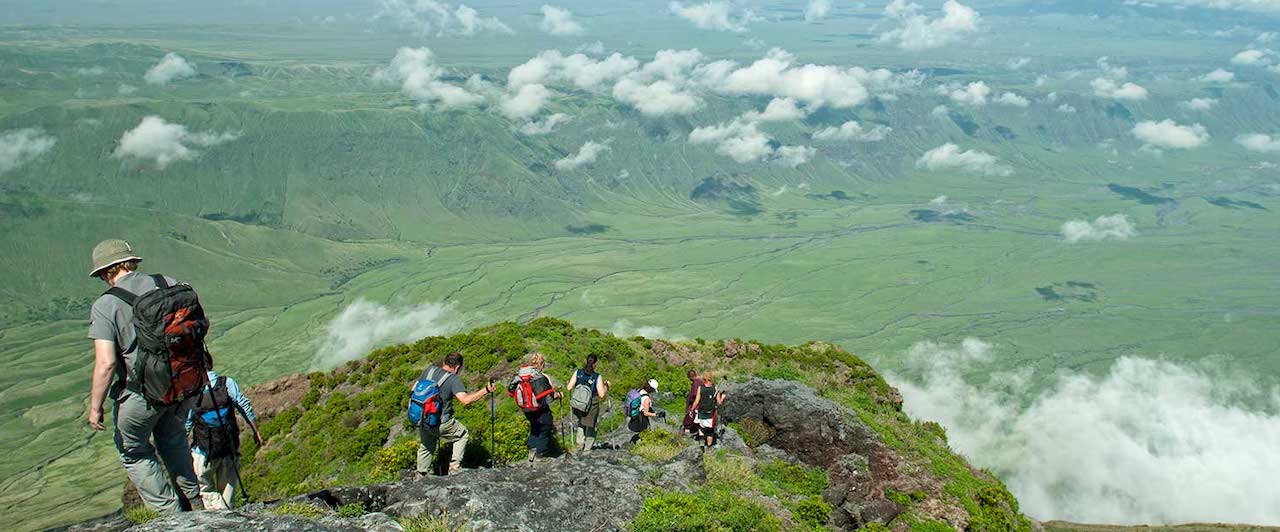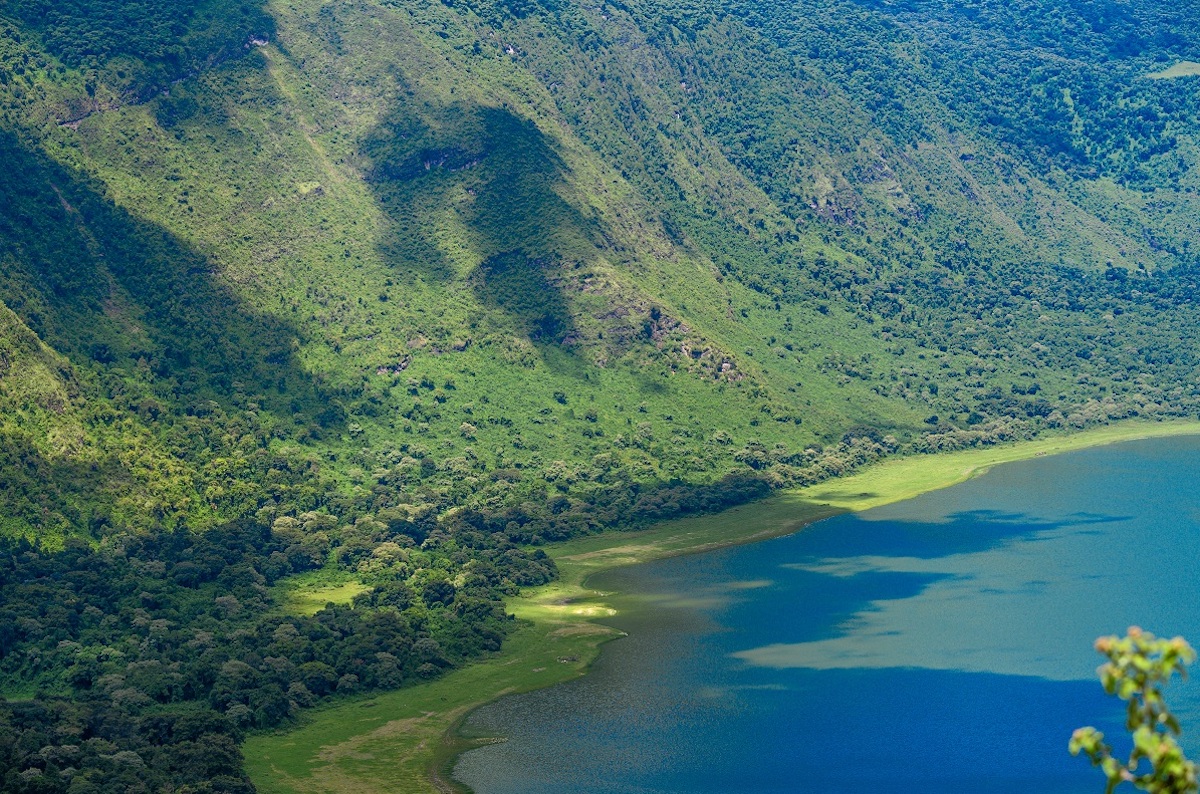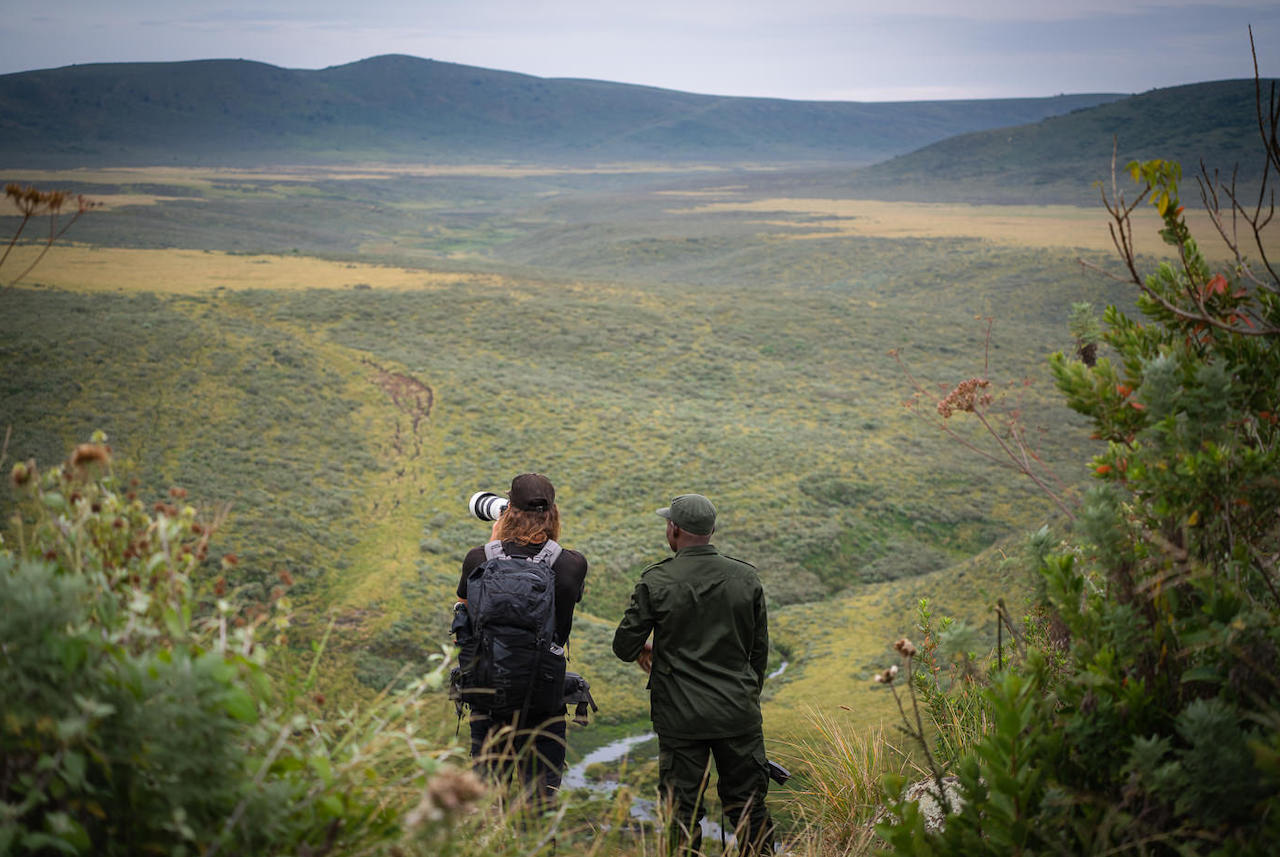Embark on a thrilling adventure through the picturesque landscapes of the Ngorongoro Highlands, where nature’s splendor awaits at every turn. Located in Tanzania, this unique trekking destination offers an incredible opportunity to witness stunning vistas, diverse wildlife, and immerse yourself in the rich Maasai culture.
Going on a trek through the Ngorongoro Highlands promises an unforgettable adventure that combines awe-inspiring natural beauty, incredible wildlife encounters, and an opportunity to immerse yourself in the vibrant Maasai culture. Whether you are an avid hiker, a nature enthusiast, or simply seeking a unique travel experience, the Ngorongoro Highlands trekking adventure will leave an indelible mark on your soul. Prepare yourself for an expedition filled with panoramic vistas, captivating wildlife, and memories that will last a lifetime.
Ngorongoro Highlands, a UNESCO World Heritage Site
The Ngorongoro Highlands, nestled in the Great Rift Valley, is a UNESCO World Heritage Site and a natural marvel. Dominated by the breathtaking Ngorongoro Crater, the region encompasses volcanic peaks, lush forests, vast grasslands, and shimmering lakes. Home to abundant wildlife, including lions, elephants, zebras, and wildebeests, the Ngorongoro Highlands offer an unparalleled opportunity to observe these majestic creatures in their natural habitat.
Ultimate Trekking Experience in the Ngorongoro Highlands
Trekking through the Ngorongoro Highlands is a once-in-a-lifetime experience for nature enthusiasts and adventure seekers alike. The region offers a variety of trails suitable for all levels of fitness and expertise, allowing visitors to customize their trekking adventure. Whether you prefer a leisurely stroll or a challenging ascent to higher altitudes, the Ngorongoro Highlands have something for everyone.
Highlights along the Trekking Trails on Ngorongoro Highlands
The most prominent physical features in the Ngorongoro Highlands are the Empakaai Crater & and the Olmoti Crater. As you venture along the trails, you’ll encounter a myriad of natural wonders that will leave you in awe. The Empakaai Crater, a hidden gem in the Ngorongoro Conservation Area, offers a breathtaking viewpoint and the chance to spot flamingos wading in its soda lake. Olmoti Crater, known for its scenic beauty and cascading waterfalls, provides a tranquil oasis amidst the rugged terrain.
Wildlife Encounters on the Hiking Trails
Ngorongoro Highlands is renowned for its diverse wildlife population. The Ngorongoro Crater, often referred to as the “Garden of Eden,” is home to an astonishing concentration of wildlife. Trekking is not allowed inside the Ngorongoro Crater’s floor but safari game drives in this area allow you to witness the “Big Five” (lions, elephants, leopards, buffalo, and rhinos) as well as a myriad of other species such as cheetahs, hyenas, and a vast array of birdlife. Be prepared for awe-inspiring encounters as you navigate through this wildlife paradise.
Exploring the Ngorongoro Crater’s rim, Empakaai Crater and Olmoti Crater on foot, allows you to watch animals up close. You expect to see forest hogs, elephants, Giraffes, and different types of antelopes. Hiking in the Ngorongoro Highlands is conducted in the company of an armed range that comes with a rifle to ensure your safety during the entire tour.
Hiking at Ngorongoro Highlands and a safari game drive at the Ngorongoro Crater’s floor can be combined easily with Serengeti National Park and other parks like Tarangire and Lake Manyara National Park, in our multi-day Tanzania safari tours.
Maasai Culture Immersion at Ngorongoro Highlands
Beyond its natural wonders, the Ngorongoro Highlands offer an opportunity to engage with the local Maasai people and experience their rich culture. Many trekking tours include visits to Maasai villages, allowing you to learn about their traditions, way of life, and perhaps even participate in cultural activities. Engaging with the Maasai community adds an enriching dimension to your trekking adventure, fostering a deeper appreciation for the region’s heritage.
Empakaai Crater: An Enchanting Natural Wonder in Tanzania’s Ngorongoro Highlands
 Nestled within the majestic Ngorongoro Highlands in Tanzania, Empakaai Crater stands as a mesmerizing natural wonder awaiting discovery. The elevation of Empakaai Crater is approximately 3,200 meters (10,500 feet) above sea level. With its awe-inspiring beauty and unique ecosystem, this hidden gem offers an unforgettable experience for travelers seeking a deeper connection with nature.
Nestled within the majestic Ngorongoro Highlands in Tanzania, Empakaai Crater stands as a mesmerizing natural wonder awaiting discovery. The elevation of Empakaai Crater is approximately 3,200 meters (10,500 feet) above sea level. With its awe-inspiring beauty and unique ecosystem, this hidden gem offers an unforgettable experience for travelers seeking a deeper connection with nature.
Formed thousands of years ago by volcanic activity, Empakaai Crater stretches across six kilometers in diameter, creating a dramatic amphitheater-like landscape. As you approach the crater’s edge, you’ll be greeted by panoramic views that showcase its sheer magnificence. The pristine beauty of Empakaai Crater lies not only in its size but also in the picturesque soda lake that shimmers at its heart, providing a striking contrast against the surrounding lush greenery.
A day’s Trek at Empakaai Crater, Ngorongoro Highlands
Embarking on a trek into Empakaai Crater unveils a world of natural wonders. The descent through the densely forested slopes is an adventure in itself, allowing you to immerse yourself in the sights and sounds of the untouched wilderness. As you make your way down, keep a keen eye out for wildlife encounters, as the crater is home to various species, including colobus monkeys, buffalos, and an array of birdlife.
Upon reaching the floor of Empakaai Crater, the ethereal soda lake takes center stage. The tranquil waters glisten under the sun, reflecting the surrounding cliffs and vegetation, creating a serene and peaceful ambiance. The lake acts as a magnet for flamingos, which flock here in large numbers, transforming the scenery into a kaleidoscope of pink hues. Witnessing these graceful birds wading through the shallow waters is a sight that will leave you captivated.
Hiking along the rim of Empakai Crater provides a different perspective, allowing you to marvel at the vastness of the surrounding landscapes. The sweeping vistas encompass not only the crater itself but also the neighboring peaks, forests, and grasslands that form the tapestry of the Ngorongoro Highlands. This vantage point offers photographers and nature enthusiasts an opportunity to capture breathtaking images and immerse themselves in the raw beauty of the region.
To make the most of your visit to Empakaai Crater, you will be accompanied by armed rangers who are also trained and knowledgeable naturalist guides who will enhance your experience with their expertise and insights. They will navigate the trails, share fascinating facts about the area’s geology and biodiversity, and ensure your safety during the trek.
The best time to visit Epakaai Crater
When planning your journey, keep in mind that the dry season, from June to October, is the ideal time to explore Empakaai Crater. During this period, the weather is generally pleasant, and the trails are more accessible. Remember to pack appropriate gear, including sturdy hiking shoes, sun protection, a camera, and plenty of water to stay hydrated.
Bird Watching at Empakaai Crater
Birdwatching in Empakaai Crater offers a captivating experience for ornithology enthusiasts and nature lovers. The crater’s diverse ecosystems, including the soda lake and surrounding montane forests, provide habitats for a wide variety of bird species.
Empakaai Crater is a paradise for birdwatchers, offering a rich diversity of bird species within its unique ecosystems. From the iconic flamingos to raptors, waterbirds, and forest-dwelling species, the crater provides an opportunity to observe and appreciate the fascinating avian life that thrives in this remarkable destination.
Below are some of the key highlights of birdwatching in Empakaai Crater:
Flamingos at Empakaai Crater
The soda lake at the center of Empakaai Crater attracts flocks of flamingos, including both Greater and Lesser Flamingos. These elegant birds create a mesmerizing spectacle as they wade through the shallow waters, showcasing their vibrant pink plumage.
Aquatic birds
The lake and its surrounding marshy areas are home to a range of waterbirds. Keep an eye out for species such as Egyptian Geese, Yellow-billed Ducks, African Jacanas, and Pied Avocets. These birds thrive in wetland habitats, adding splashes of color and vitality to the crater’s landscape.
Birds of Prey
Empakaai Crater is also a haven for raptors, including various eagles, hawks, and buzzards. Look out for the African Fish Eagle, Augur Buzzard, Tawny Eagle, and Long-crested Eagle soaring overhead. These impressive birds of prey showcase their hunting prowess as they navigate the skies above the crater.
Montane Forest Birds
The forests surrounding Empakaai Crater are teeming with avian life. Species like Hartlaub’s Turaco, Olive Pigeon, Cinnamon-chested Bee-eater, and White-starred Robin are commonly spotted in these habitats. Their melodious calls and vibrant plumage contribute to the enchanting ambiance of the crater.
Other Species available at Empakaai
Empakaai Crater is home to a wide range of other bird species, including hornbills, sunbirds, starlings, and weavers. The crater’s varied habitats, from grasslands to forests, support a diverse bird population, offering ample opportunities for birdwatchers to spot and appreciate the region’s avifauna.
When birdwatching in Empakaai Crater, it is recommended to bring binoculars, a field guide, and a camera to enhance your birding experience. Additionally, hiring a knowledgeable local guide can greatly enhance your chances of spotting and identifying the different bird species, as they are familiar with the area and its avian inhabitants.
Olmoti Crater: A Tranquil Oasis in the Scenic Ngorongoro Highlands
Nestled amidst the breathtaking landscapes of Tanzania’s Ngorongoro Highlands, Olmoti Crater awaits as a tranquil oasis waiting to be explored. This hidden gem offers a serene and picturesque setting, providing a unique experience for travelers seeking a harmonious blend of nature and tranquility. In this article, we’ll discover the allure of Olmoti Crater and why it deserves a special place on your travel itinerary.
Located in the Ngorongoro Conservation Area, Olmoti Crater is a dormant volcano that has evolved into a haven of natural beauty. Its verdant slopes are adorned with lush vegetation, cascading waterfalls, and an abundance of wildlife. The name “Olmoti” translates to “cooking pot” in the Maasai language, perfectly encapsulating the essence of this captivating destination.
 Join us on a trek to Olmoti Crater takes you on a journey through diverse ecosystems and breathtaking landscapes. The trail leading to the crater is surrounded by montane forests, rich in endemic plant species, and provides a refreshing escape from the outside world. As you make your way toward the crater’s rim, the peaceful ambiance is accompanied by the melodious sounds of birds and the occasional sighting of wildlife such as buffalos, antelopes, and even elephants. Hiking at The Olmoti Crater can be incorporated into longer walking safari tours in Tanzania. Please get in touch with our experts for customized tours that will quench your hiking desires.
Join us on a trek to Olmoti Crater takes you on a journey through diverse ecosystems and breathtaking landscapes. The trail leading to the crater is surrounded by montane forests, rich in endemic plant species, and provides a refreshing escape from the outside world. As you make your way toward the crater’s rim, the peaceful ambiance is accompanied by the melodious sounds of birds and the occasional sighting of wildlife such as buffalos, antelopes, and even elephants. Hiking at The Olmoti Crater can be incorporated into longer walking safari tours in Tanzania. Please get in touch with our experts for customized tours that will quench your hiking desires.
The beauty that awaits the Olmoti Crater’s Floor
Reaching the rim of Olmoti Crater unveils a scene of unparalleled beauty. The crater floor, blanketed with lush grasslands, is caressed by pristine streams that meander through the expanse. One of the highlights of Olmoti Crater is the stunning Munge Waterfall, which tumbles down the cliffs, creating a captivating spectacle. The sight and sound of the cascading water add to the tranquil atmosphere, inviting visitors to sit back, relax, and absorb the serenity that surrounds them.
Trekking down into Olmoti Crater rewards you with an even closer encounter with the natural wonders it holds. Descending the crater walls, you’ll find yourself enveloped by the refreshing mist from the waterfalls and immersed in the untouched beauty of the surroundings. Exploring the crater floor allows for peaceful walks through the grasslands, where you can enjoy the pristine environment and observe the diverse birdlife that inhabits the area.
Visiting Olmoti Crater is not only an opportunity to connect with nature but also to gain insights into the local Maasai culture. Many trekking tours include visits to nearby Maasai villages, where you can interact with the local community, learn about their traditions, and gain a deeper appreciation for their way of life. Engaging in cultural activities and witnessing traditional ceremonies can provide a meaningful and enriching experience during your visit to Olmoti Crater.
When planning your trip, keep in mind that the best time to explore Olmoti Crater is during the dry season, from June to October, when the weather is favorable for trekking. It is recommended to have sturdy hiking shoes, comfortable clothing, sun protection, and a camera to capture the breathtaking scenery.
